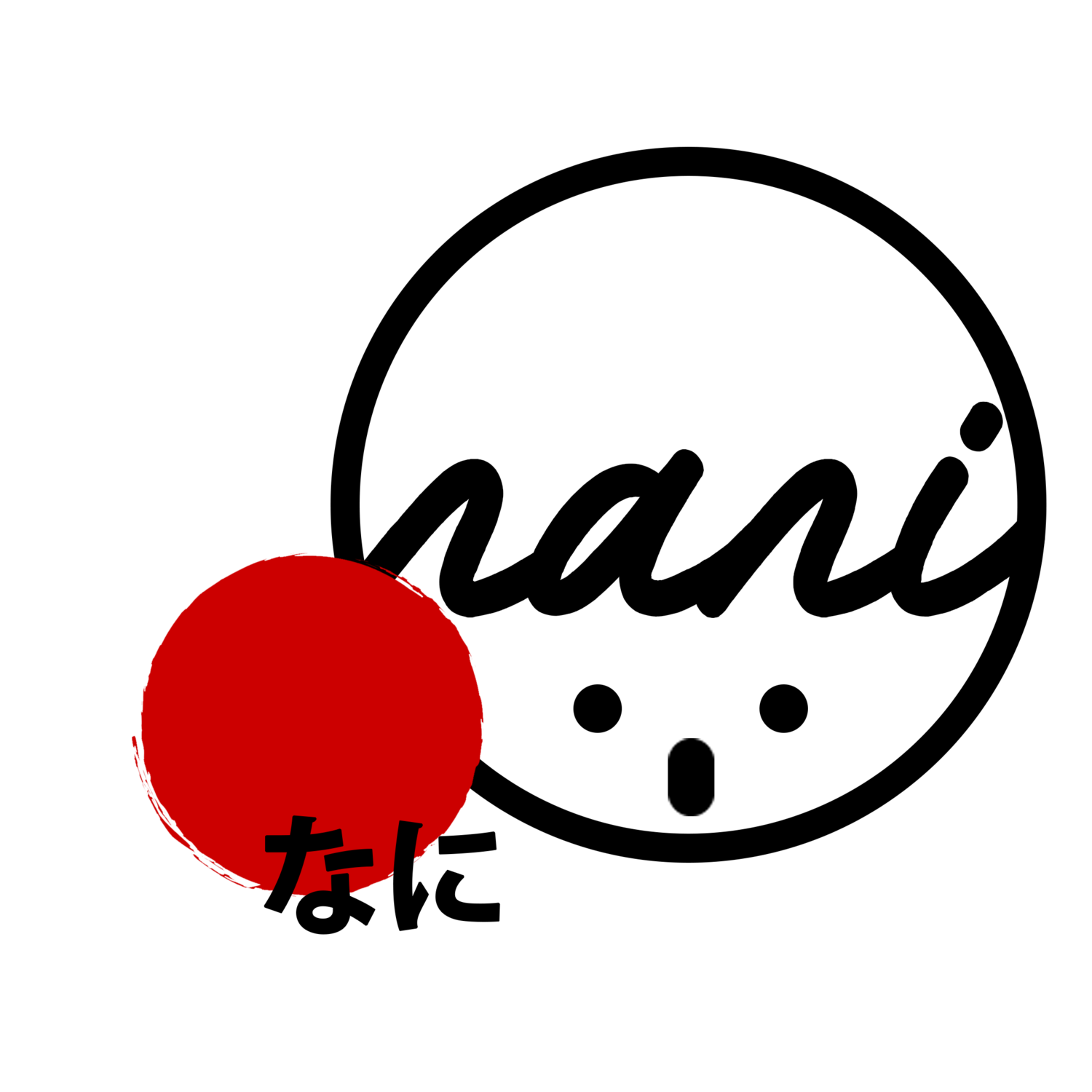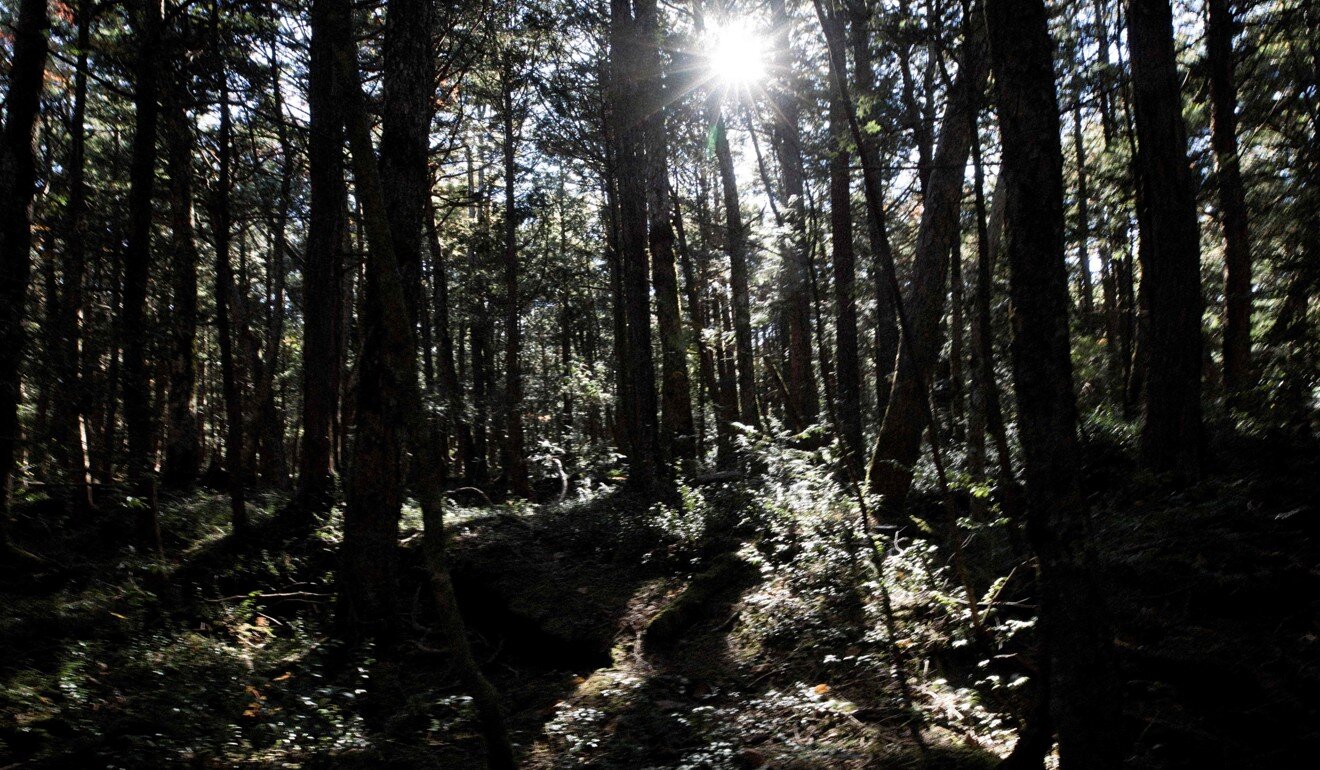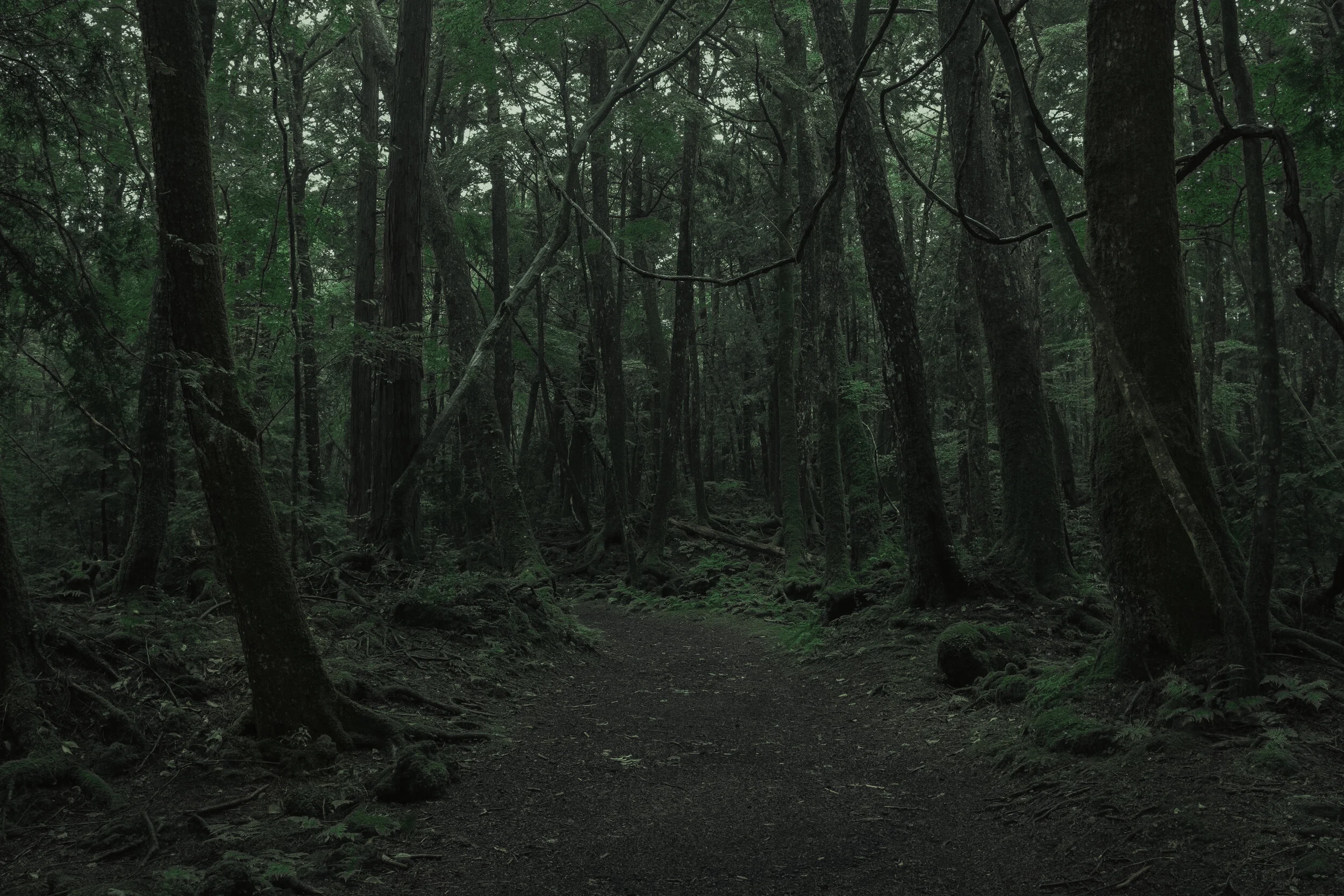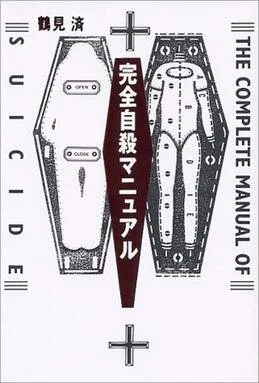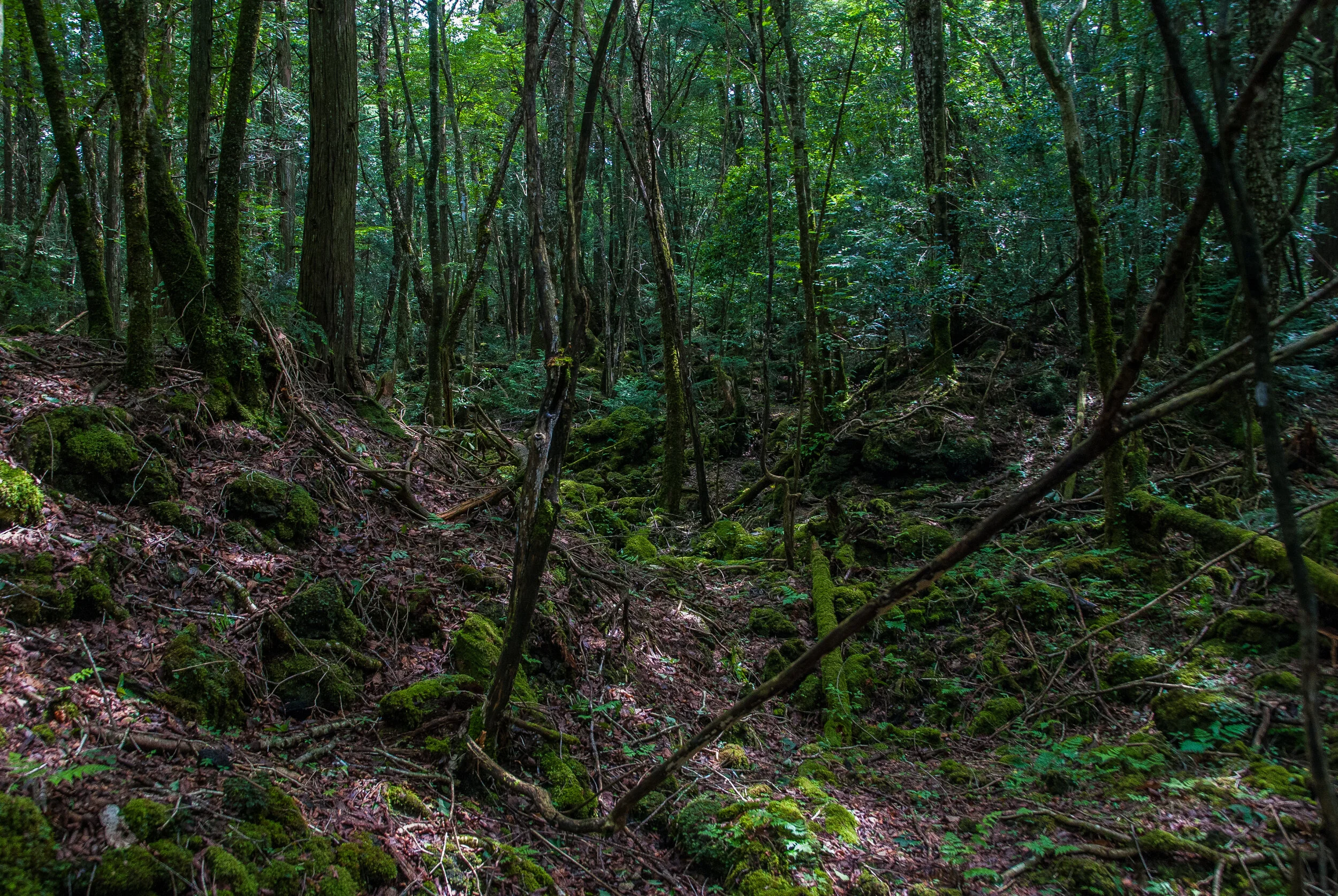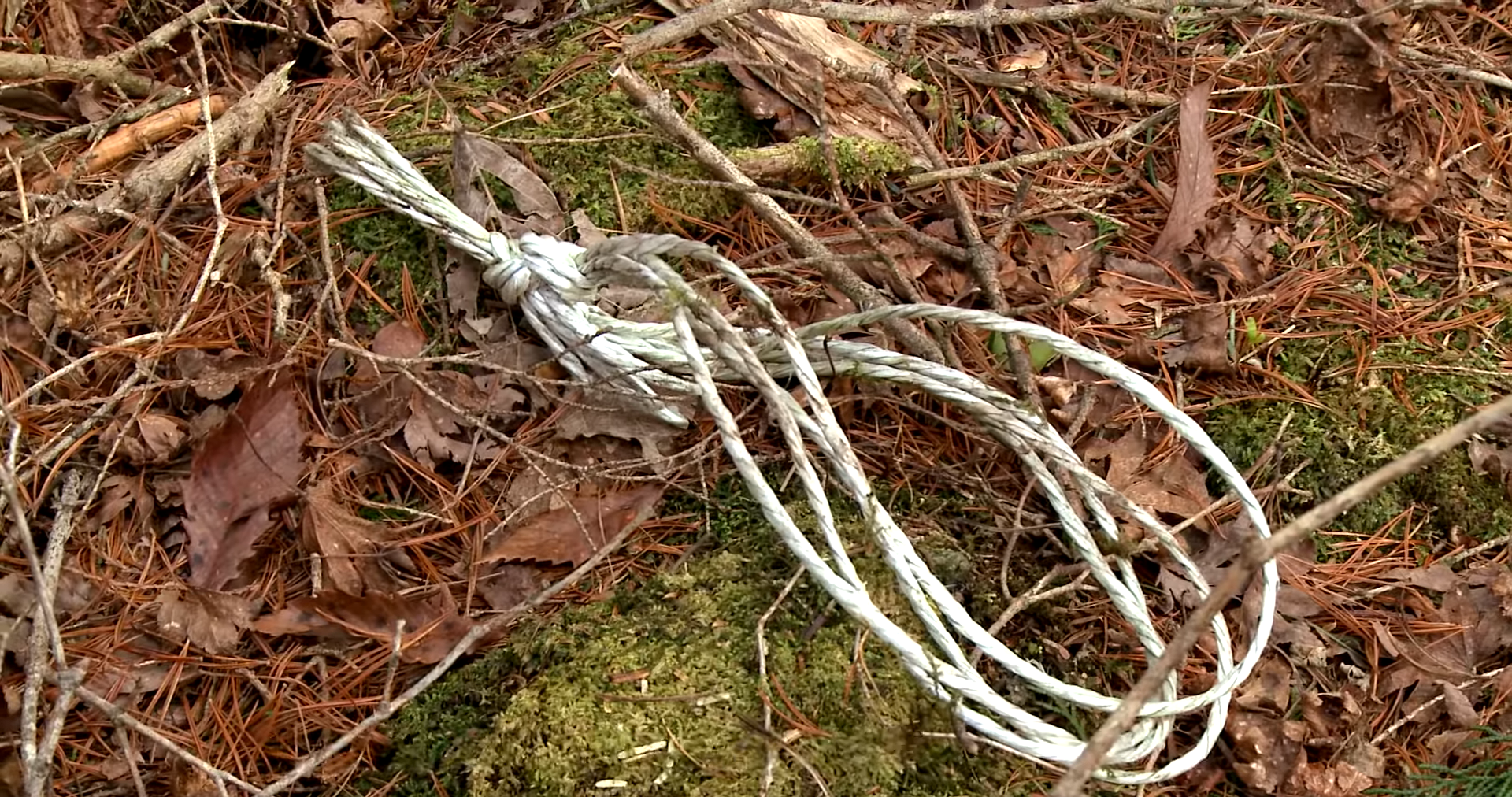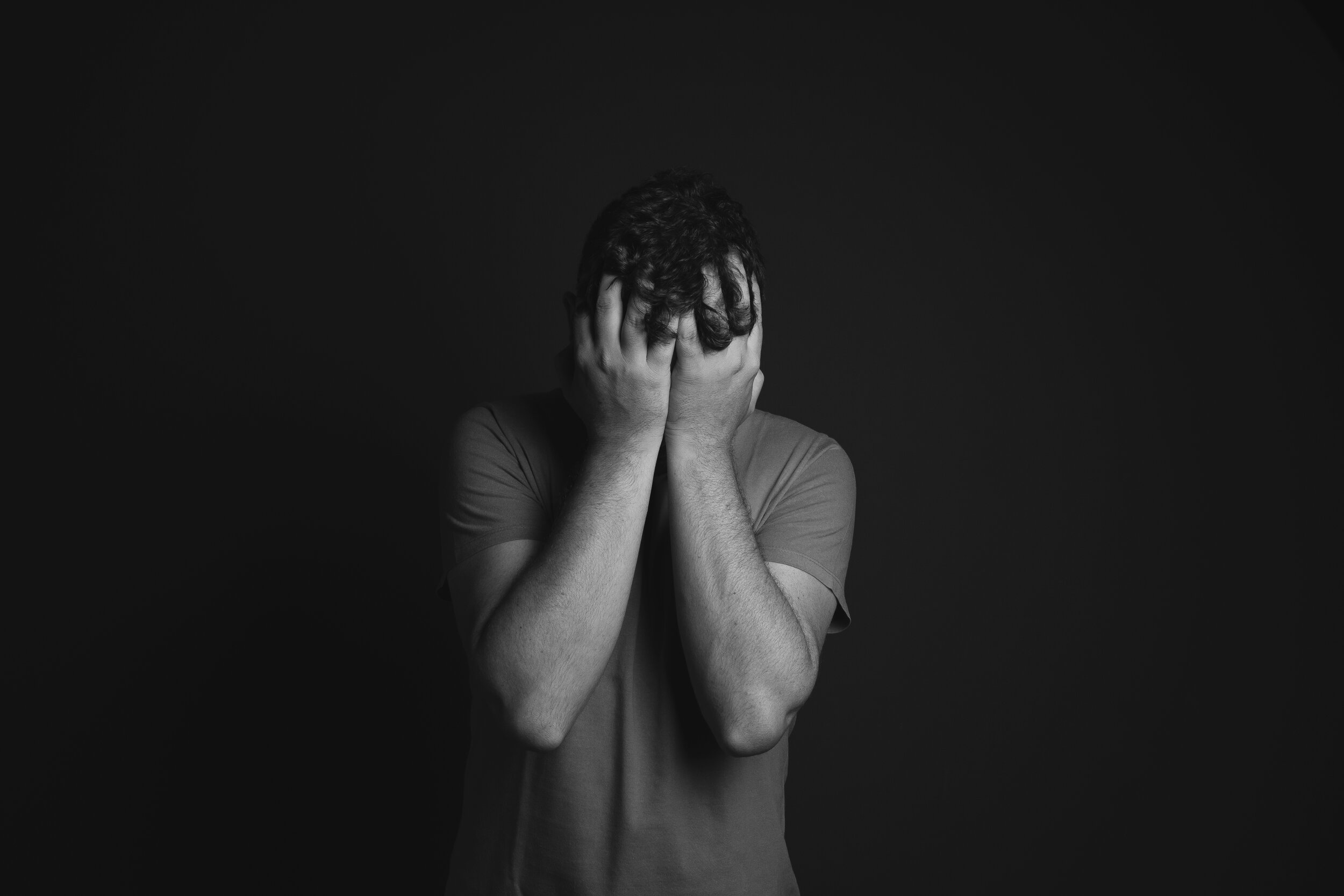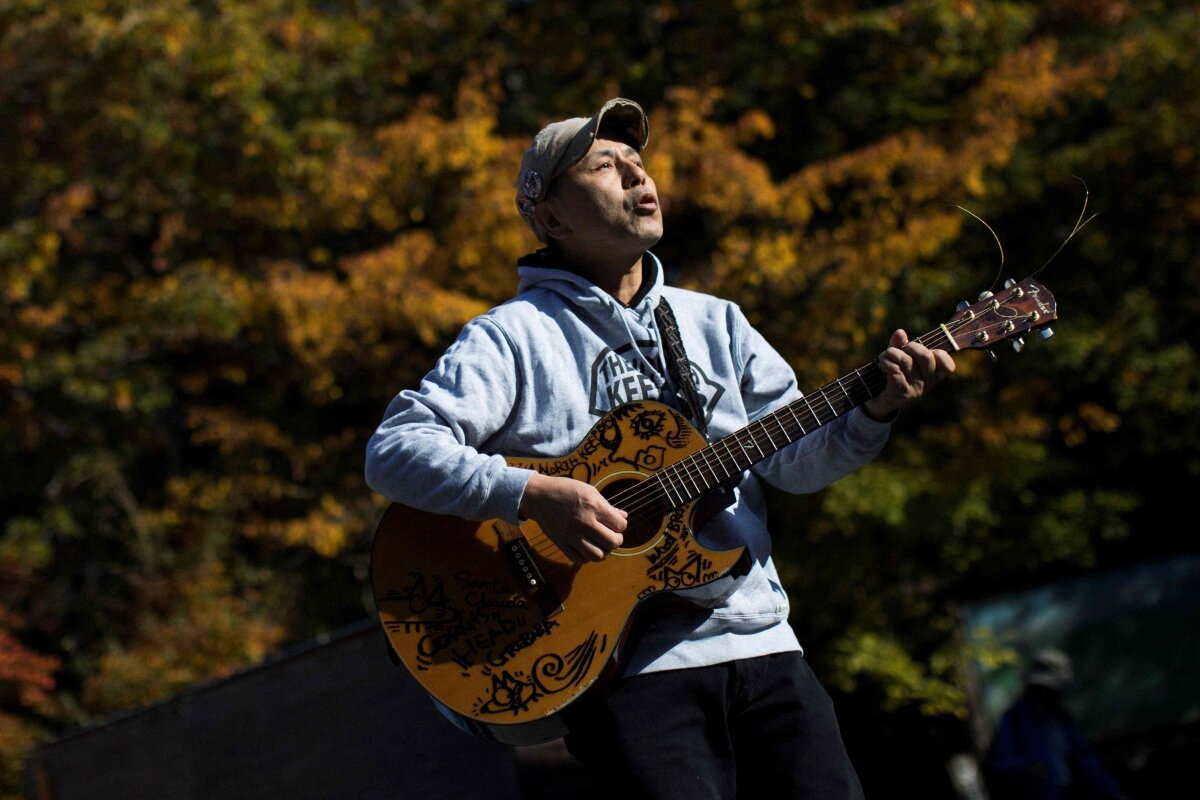Aokigahara: A Look Into the Sombre Reality of Japan’s Mental Health Scene
Photo credits: Agence France-Presse (AFP)
Disclaimer: This article contains sensitive and potentially disturbing content about death and suicide. If you are uncomfortable with such topics, please proceed with caution or do not read on.
The haunting allure of the ‘Suicide Forest’
Aokigahara (青木ヶ原) is a vast, sprawling forest in Yamanashi Prefecture that spans over 30 square kilometers. It sits right along the edge of Mount Fuji, Japan’s highest peak.
It is aptly known as the Sea of Trees (樹海, Jukai). In the year 864, Mount Fuji erupted, spewing great amounts of lava down the north-west side of the mountain. Centuries later, Aokigahara grows rapidly over the dried lava that once buried the innumerable people who lived on the same land. And today, the forest is a dense mass of trees, the foliage so thick that winds are unable to pass through and those who wish to return from it unscathed bring tape to mark and retrace their steps.
Photo credits: Pascal Krass on Flickr
But if you’ve heard of Aokigahara, it’s probably because of the highly controversial video that YouTuber Logan Paul uploaded on his channel in January 2018, in which he entered the forest hoping for a glimpse of something macabre. The video — which has since been taken down — sparked international outrage for the glib and disrespectful manner he displayed, especially after discovering the body of a Japanese man who had committed suicide.
And this brings us to the crux of the story.
Aokigahara is a place of stark beauty, but it is also one with a tragic background. Because for over half a century, thousands of life-weary Japanese have made one-way trips to end their lives in this forest, earning Aokigahara the unfortunate title of ‘Suicide Forest’.
Photo credits: Ko Sasaki for The New York Times
At Aokigahara, the forest is so dense that you are unlikely to meet anyone else once you enter. The terrain is tricky; trees twist and turn organically, and their gnarly roots wind across the ground in treacherous threads. The forest floor is uneven, rocky and perforated with caves. Because of the rich magnetic iron deposits in the volcanic soil, compasses and mobile phones may sometimes be rendered useless.
Beyond the cordoned off areas, miles of tape extend in every direction, each a silent intention to survive or an unmade decision still. Moss-covered clothing, shoes and personal belongings are scattered throughout the forest floor, items that are seemingly unimportant if not for the acute awareness that these may have been the very last possessions some people ever had.
Photo credits: Rob Gilhooly for The Japan Times
But more chilling than anything else is the stillness. Wildlife is sparse and there are no winds. Alone and surrounded by nothing but trees, the unnerving silence reminds you that this is a landscape permeated with the resonance of death.
How everything started: Aokigahara’s ominous history
Aokigahara's dark reputation has been around for ages, long before the suicides began. Centuries ago, this place had already been associated with death.
According to Japanese folklore, ubasute (姥捨て), the ancient practice of senicide whereby elderly relatives are left alone at remote, desolate places to die, occurred in Aokigahara in the 1800s. Thus, the forest has always been seen as a home to yūrei (幽霊), which are ghosts of the dead in Japanese mythology.
Photo credits: Wikipedia
During 1960, the forest’s infamy skyrocketed when the novel Tower of Waves (波の塔) by Seichō Matsumoto was published, in which a heartbroken heroine retreats to the forest to take her own life. As the novel gained traction, its romantic imagery grew to be a sinister influence on those contemplating suicide. Also looped into this lore was the book The Complete Suicide Manual (完全自殺マニュアル) by Wataru Tsurumi, released in 1993, which dubs Aokigahara "the perfect place to die". This is presumably due to its magnificent landscape and its quiet tranquility.
Over time, sensationalism of such media reinforced the idea of this forest as a comfortable place for people to end their suffering. The association eventually became so strong that some actually began travelling to Aokigahara to take their last breaths there.
In a way, it may even have brought them a feeling of peace to know that they were not alone in their struggles, instead finding connection and understanding with those that had previously died there as well.
Photo credits: Japón Entre Amigos on Flickr
In monthly sweeps coordinated by the local police and volunteer firemen, dead bodies are frequently discovered in Aokigahara, with the main cause of death being hanging. However, many corpses are forever lost in the thick woods and some others are found by wild animals before the authorities do.
Police records show that in 2010 alone, a staggering 247 people attempted suicide in Aokigahara, with 54 of them being successful. Japanese authorities have since stopped publishing the exact number of suicides in order to dissuade more people from taking their lives there.
Photo credits: Vice
But as more and more Japanese are finding the need to end their lives, this points to the worrying fact that mental distress is becoming an increasingly prevalent problem in Japan.
Japan’s take on mental health and suicides
According to Japan’s Ministry of Health, Labor and Welfare, suicides roughly totaled 24,000 people countrywide in 2015 alone. Moreover, these numbers exclude attempted suicides, further clouding the issue surrounding how many people exactly struggle with mental health problems. The World Health Organisation also ranked Japan 26th globally for age-adjusted suicide rates in 2015, making it one of the top-ranked developed countries.
In Japan, the importance of mental health is not sufficiently addressed as it is still a taboo subject that many avoid. Mental illness is seen as a personal weakness of the individual and it is this stigma that prevents people from reaching out for help. Without access to proper mental healthcare, many are left exhausted and feeling like a burden to others. Hence, they resort to suicide as a way out of the problems they believe they are unable to cope with.
Photo credits: Daniel Reche on Pexel
Yukio Saito, Chair of the Japanese Association for Suicide Prevention and CEO of the Japanese Federation of Inochi-no-denwa (Lifeline), Japan’s first and largest telephone counseling service, states that most victims are middle-aged men suffering from depression. While callers most frequently cite mental health and family problems as the main reasons for contemplating suicide, there are usually other underlying factors such as financial problems or unemployment. Because loyalty to a company is usually rewarded through a seniority-based benefit system in Japan, it is uncommon for Japanese to switch jobs, making job loss an especially stress-inducing situation.
In addition, some claim that Japan’s unique culture plays a part in its high suicide rates because suicide is not seen as unacceptable in society on religious or moral grounds.
Photo credits: History.com
In the past, suicides were often associated with honourable reasons. During Japan’s feudal era, samurai warriors committed seppuku (切腹, ritual disemboweling) as a way to uphold their honour and dignity rather than fall into the hands of their enemies. Even during World War II, soldiers who joined the Kamikaze (神風, the Special Attack Unit where military avaitors initiated suicide crashes into enemy naval vessels in order to destroy their warships), were well respected and recognised as they were seen as sacrificing themselves for the country.
While these historical facts are true, it is highly unlikely that the large number of suicides witnessed today are vestiges of long irrelevant traditions. Death should never be encouraged as a way for individuals to take responsibility for their own lives and it should never be an acceptable punishment for people not “doing their part in society”.
Attempting to link a dysfunctional tendency of those who are mentally unwell to Japan’s history of honourable deaths instead masks the severity of the circumstances that must have driven these individuals to make such grim and final decisions, once again downplaying the significance of mental health in our everyday lives.
Japan’s mental health landscape is in dire need of reform. Without change, we risk losing more loved ones to the dark depths of depression and other mental disorders that we are all susceptible to.
Western fascination with an exoticised Japan
When YouTuber Logan Paul uploaded a video of his adventure into Aokigahara at the start of 2018, it sparked wide backlash for his tone-deaf attitude towards suicide and mental health in a foreign country where such an issue is so prevalent.
Without considering the gravity of the place and situation, he broadcasted whatever he found to the rest of the world, including the remains of a Japanese man who had committed suicide. Instead of alerting the authorities and being respectful, he boasted about the virality his content would achieve online, which was slammed for being insensitive and callous.
Photo credits: YouTube
But Paul’s motivation to visit Aokigahara was not simply an accident. According to Allison Alexy, a cultural anthropologist who specializes in contemporary Japanese culture, it is part and parcel of a larger American fascination with Japan.
Intrigued by Japan’s unique customs and traditions, many tourists flock to the country to ogle at geishas, scoff at the “strangeness” of anime culture and play dress-up in their traditional garb. The entire country is reduced to a caricature of either its most aesthetically appealing or its most bizarre facets, without deep understanding of and appreciation for such cultural aspects.
This is evident in how Aokigahara is viewed as well. In recent years, the forest has increasingly been referenced to in Western media, such as in the American films The Sea of Trees and The Forest.
Photo credits: The Sea of Trees (2015) / The Forest (2016)
But in these movies, there is a lack of sensitivity towards the struggles faced by the Japanese who have taken their lives there. The forest is used simply as a setting for Western protagonists to tell their story, without respecting Japan’s richly developed history and culture, or without granting reality to the pain of the Japanese characters. Aokigahara is used to represent a sort of non-Western madness and superstition, a poorly thought-out move which is hugely disappointing in this day and age.
In the Western imagination, Aokigahara retains its reputation, not necessarily due to tragedy, but to allure. The countless people who have ended their lives in the forest are seen merely as nameless, faceless consequences of an epidemic they may not sincerely care about. The erasure of mental illness and suicide faced by people of colour continues to be a major problem in the Western world, one that needs to be acknowledged and addressed in order for minority groups to heal from the truth they have been denied.
It’s not all doom and gloom
However, with all of humanity’s darkness and despair also come along light and hope.
At the entrances of Aokigahara, there are signs in Japanese that read “Life is a precious gift. Please quietly think once more about your parents, siblings and children. Don't suffer alone, reach out". Along with the cautionary message is the phone number of a suicide hotline. These signs were erected by Toyoki Yoshida, now in his late 40s, who once attempted suicide himself due to debt.
Photo credits: Ko Sasaki for The New York Times
Hideo Watanabe, 73, who owns a lakeside cafe that faces an entrance to Aokigahara, remains vigilant for individuals who seem like they are on a suicide mission. Making an effort to chat them up, he has saved around 160 people over 30 years.
From his hut at the edge of Aokigahara, 62-year-old musician Kyochi Watanabe blasts music into the night, breaking the heavy silence that engulfs the forest. He sometimes plays the guitar and sings his favourite songs into a microphone as well, in hopes to lift people from their inner turmoil.
Photo credits: Agence France-Presse (AFP)
These acts of kindness, no matter how seemingly trivial like talking to someone, highlight the inherent goodness in people. They remind us that even though they may be strangers, there are still people out there who care enough to dedicate their time and energy into looking out for others in need.
Additionally, over the years, there have been more concrete attempts to curb suicides by the authorities, both at Aokigahara and nationally.
At Aokigahara, security cameras are installed at the entrances to track those who enter. Other measures underway include training volunteers to talk to potentially suicidal visitors, increasing police patrolling and discouraging digital media that might boost the forest's notorious reputation. On a national scale, focus is placed on “normalisation”, in which mental disorders are seen as health conditions rather than weaknesses. New practices include deinstitutionalization, differentiation of services, revisions in payment and quality assessments.
As progress is made towards a more accepting and educated society, a better future is surely in stall for those struggling with mental health issues, who can benefit from the improved healthcare services as well.
If you do visit Aokigahara…
Please treat the place with respect. If you come across any victims of suicide, contact the local authorities immediately so that they can handle the situation appropriately. It is a sombre place, one where the gravity of the circumstances should not be taken lightly.
Photo credits: Ko Sasaki for The New York Times
